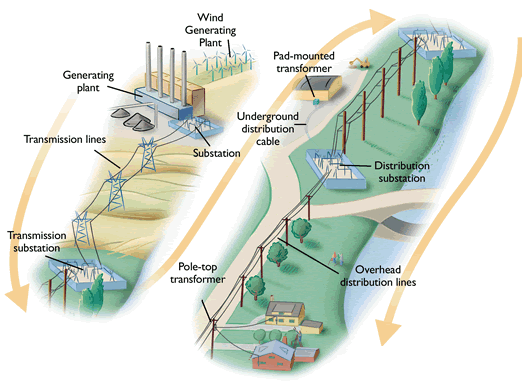Enjoy our public awareness videos and be equipped with the awareness on electricity generation in Sri Lanka!
How the Sri Lankan Power System is controlled
The electricity we use every day is generated in power plants by converting resources such as water, sun, coal, oil, natural gas and wind into electrical power. It is generated by a large magnet that spins inside coils of wire. High pressure steam or water is used to turn a turbine – a large fan – attached to the generator to get the magnet spinning. As the magnet rotates inside the loops of wire, electric current is produced.
This electric current is sent through a vast power grid of high-voltage transmission lines to a substation in your area. At the substation, the voltage is reduced and overhead or underground distribution lines carry the electricity to your home or work.
Power lines leading to residential areas generally carry 4,200 to 34,500 volts. Within neighborhoods, the voltage is decreased further with step-down transformers located on the top of poles (or in a vault on the ground) to the typical 120 to 240 volts for safe home use.

Electricity always seeks to go into the ground as the path of least resistance – and that's when injury and harm can occur.
Conductors, such as power lines, allow electricity to move freely through them, while insulators are resistant to the flow of electricity. Some examples:
Within the home, it is typical to have conductors covered with an insulator, such as a rubber-covered electric cord. However, this does not guarantee safety. A variety of circumstances can compromise the integrity of insulators.
Electricity Management